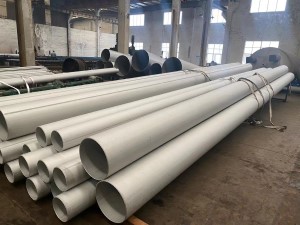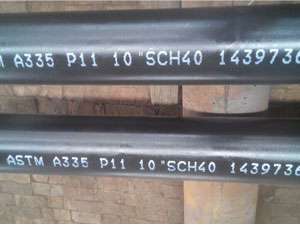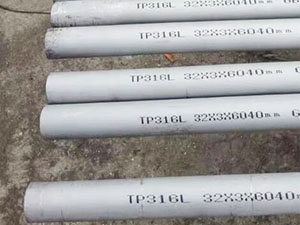There are many different types of surface finish on stainless steel. Some of these originate from the mill but many are applied later during processing, for example polished, brushed, blasted, etched and coloured finishes.
The importance of surface finish in determining the corrosion resistance of the stainless steel surface cannot be overemphasised. A rough surface finish can effectively lower the corrosion resistance to that of a lower grade of stainless steel.
The European standards for stainless steels have attempted to define the most common surface finishes. However, due to the proprietary nature of many suppliers’ finishes, it is unlikely that complete standardisation is possible. This is a summary of the most common types for each product form
Common Surface Finishes for Flat Products from EN 10088-2 (for full list see Specifying finishes for stainless steel flat products (sheet and plate)
| Surface Finish Code |
Description |
| Mill finishes |
|
| 1D |
Hot rolled, heat treated, pickled. The most common hot rolled finish. A non reflective, rough surface. Not normally used for decorative applications |
| 2B |
Cold rolled, heat treated, pickled, pinch passed. The most common cold rolled mill finish. Dull grey slightly reflective finish. Can be used in this condition or frequently is the starting point for a wide range of polished finishes. |
| 2D |
Cold rolled, heat treated, pickled. |
| 2H |
Work hardened by rolling to give enhanced strength level. Various ranges of tensile or 0.2% proof strength are given in EN 10088-2 up to 1300 MPa and 1100 MPa respectively dependent on grade |
| 2Q |
Cold rolled hardened and tempered. Applies to martensitic steels which respond to this kind of heat treatment. |
| 2R |
Cold rolled and bright annealed, still commonly known as BA. A bright reflective finish. Can be used in this condition or as the starting point for polishing or other surface treatment processes e.g. colouring |
| |
In the following codes “1” refers to hot rolled being the starting point and “2” as cold rolled |
| Special Finishes |
|
| 1G or 2G |
Ground. Relatively coarse surface. Unidirectional. Grade of polishing grit or surface roughness can be specified |
| 1J or 2J |
Brushed or dull polished. Smoother than 1G/2G. Grade of polishing grit or surface roughness can be specified |
| 1K or 2K |
Satin polish. Similar to 1J/2J but with maximum specified Ra value of 0.5 micron. Usually achieved with SiC polishing belts. Alumina belts are strongly discouraged for this finish as this will have detrimental effect on corrosion resistance. Recommended for external architectural and coastal environments where bright polish (1P/2P) is not acceptable. |
| 1P/2P |
Bright polished. Non-directional, reflective. Can specify maximum surface roughness. The best surface for corrosion resistance. |
| 2L |
Coloured by chemical process to thicken the passive layer and produce interference colours. A wide range of colours is possible. |
| 1M/2M |
Patterned. One surface flat. |
| 1S/2S |
Surface coated e.g. with tin = Terne coating |
| 2W |
Corrugated. Similar to patterned but both surfaces are affected |
| Bead blasting |
Not in EN 10088-2. Work being undertaken to more accurately define finishes. |





